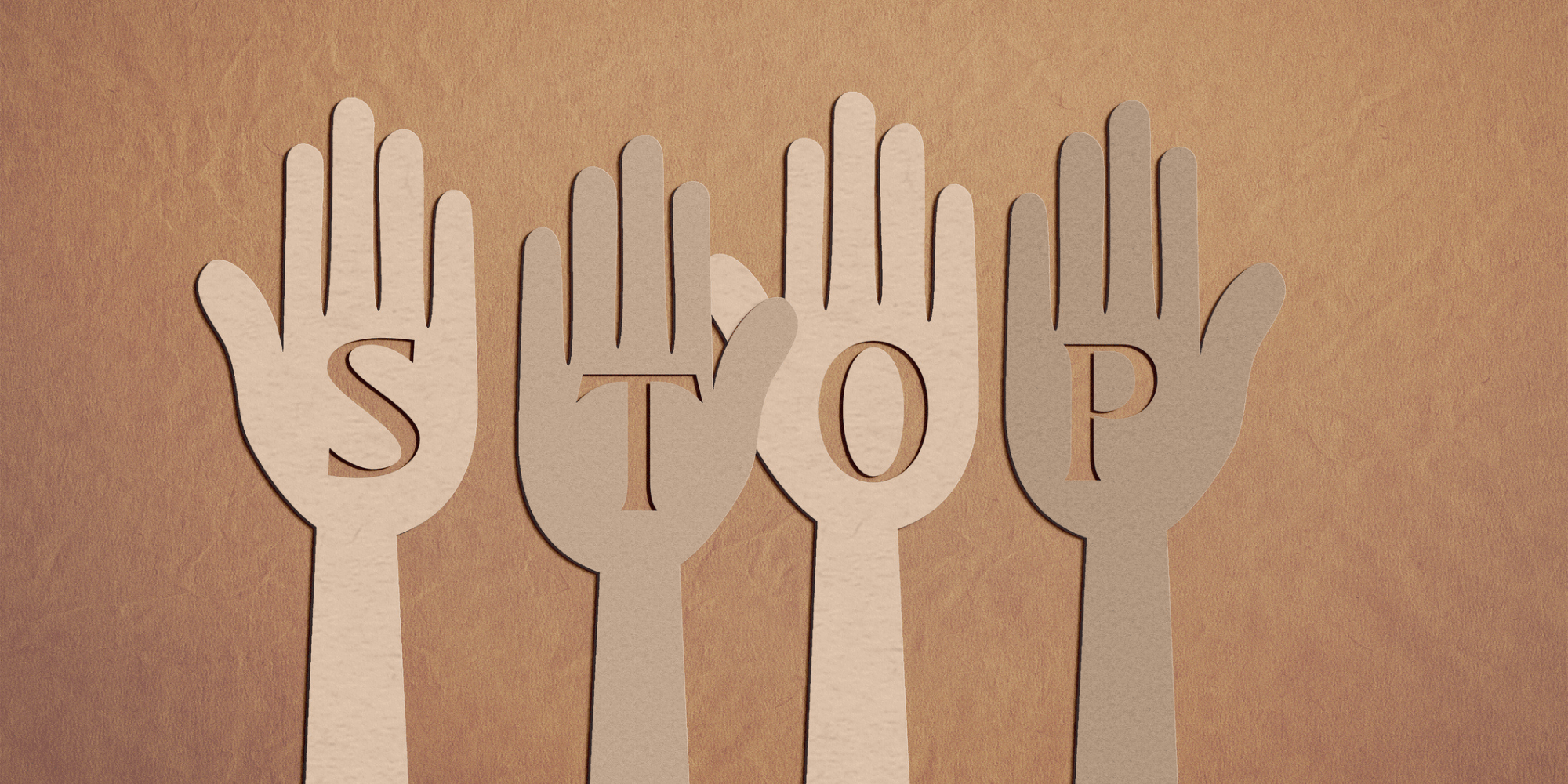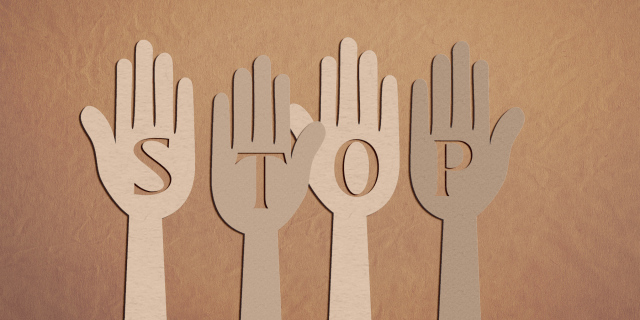
Common Sexual Assault and Violence Myths, Debunked
8 Pervasive Myths About Sexual Violence It’s Time We All Stopped Believing

8 Pervasive Myths About Sexual Violence It’s Time We All Stopped Believing
Because of retrograde, incomplete and narrow-minded sex education curriculums, the concept of sex is one shrouded in mystery for far too many people. Worse yet, this also extends to the necessarily thorny topics of sexual assault and violence.
Even in our information-saturated digital age, much of what people think they know or instinctively believe about sexual violence doesn’t hold up to a fact-check. In fact, much of it turns out to be sexist nonsense, victim-blaming nonsense, or both.
And while misconceptions about consensual sex can be harmful on their own, misconceptions about non-consensual sexual behavior can wreak significant damage in people’s lives.
So in order to help prevent some of those worst-case scenarios, AskMen spoke to a couple of sex experts about some all-too common and pervasive myths about sexual violence.
Myth: Sexual Abuse Is Always Perpetrated by Violent Strangers
Perhaps because it seems more dramatic in depictions of sexual violence in movies and TV, lots of people seem to think that the people most likely to commit sex crimes are strangers. But while those things do happen, they’re very rare compared to sexual violence committed by someone the person knows.
“Contrary to popular belief, most instances of sexual abuse involve perpetrators who are known to the victims,” says Rhiannon John, sexologist at Bedbible.com. “It is essential to acknowledge that these individuals often have pre-existing relationships or connections with their victims. Sexual abuse can occur in various contexts, including within families, relationships, workplaces, or social circles.”
“Furthermore, it is crucial to understand that sexual abuse does not always involve overt violence,” says John. “Many incidents occur when the victim is incapacitated due to substances such as alcohol or drugs or when they are asleep or otherwise unable to provide consent.”
Myth: The Victim/Survivor Is the One Responsible for Stopping the Sexual Abuse
Have you ever heard of women sharing tips on how not to get raped or assaulted? Of course, these can be incredibly useful and at times life-saving bits of knowledge — but they’re not the whole story when it comes to sexual violence prevention.
That’s because culturally, we do a poor job of teaching young men how (and why) not to commit acts of sexual violence.
“Historically, almost all consent education has focused on how to say ‘no,’ or what to do when you’re in a situation where your boundaries are being crossed, rather than focusing on preventing nonconsensual sexual encounters from the perpetrator’s side,” says activist and sex educator Nora Langknecht, marketing manager for sex toy brand FUN FACTORY.
“This is shortsighted,” she says, because it “puts the burden of emotional work on the survivor. Building a sex-positive and anti-rape culture requires us to teach a broader concept of consent, bringing in community as well.”
Myth: If a Survivor Doesn’t Report the Violence Right Away, They’re Likely Lying
There’s a perception for many people that if the survivor didn’t go to the police (or even tell friends or family) right after the assault occurred, they must have made it up.
But this simply doesn’t line up with how human beings process trauma — which is to say, that everyone processes it a bit differently. While some people may be motivated to report right away, others may be in shock, fearful for their wellbeing, or simply needing time to process what happened.
In short, reporting the abusive behavior much later, even years or decades later, is not a sign that the person was making something up, but rather that sexual violence is a deeply jarring event that produces myriad complex, completely valid responses on the people who experience it.
(And, of course, there’s the fact that marginalized people may rightly feel they’re less likely to be believed or taken seriously by the authorities due to racial factors or other reasons.)
Myth: Sexual Abuse Is Primarily Motivated by Sexual Desire
Men sometimes say things like, “She’s so hot, I just couldn’t control myself around her.” And while it’s understandable to feel overwhelmed by your attraction to someone, it doesn’t ever excuse committing sexually violent acts towards them.
“There is a common misconception that sexual abuse is primarily driven by sexual desire,” says John. “However, the reality is that sexual abuse is more about power, control, and dominance than genuine attraction.”
“Perpetrators of sexual abuse use sexual acts to assert authority, humiliate their victims, and manipulate them,” John adds. “It is important to understand that sexual abuse is an act of violence. It reflects the perpetrator’s desire to exploit and exert control over others, often causing survivors severe emotional, psychological, and physical trauma.”
Myth: Men Are the Perpetrators of Sexual Violence and Women Are the Victims/Survivors
It’s hard not to get the impression that rape and other forms of sexual violence are almost exclusively perpetrated by men against women. But that’s not accurate.
“While it’s true that much of our data shows cis women experiencing higher rates of abuse than cis men, this doesn’t mean this is the full picture,” says Langknecht. “Sexual violence is not strictly a gendered phenomenon, and when we only speak of it in those terms we make it harder for others who have experienced it to find resources and support.”
Because of this myth, men who’ve experienced sexual assault may struggle to recognize what has really happened to them, and may keep quiet about their experience because they fear others won’t understand.
Recognizing that while sexual violence is often gendered, it isn’t always gendered is crucial to developing a fuller, clearer picture of the situation, and an important step in helping end the problem.
Myth: False Reports of Sexual Assault or Violence Are Common
In a culture that so often blames victims for their own abuse, a myth has developed to support and protect perpetrators: that many, most or nearly all accounts of sexual violence are actually fabrications. However, the data that exists on these matters not only doesn’t support that belief, it actually unequivocally states the opposite: that false sexual violence reports are actually quite rare.
This makes sense when you consider the pervasive cruelty in our culture towards people who’ve experienced sexual violence, John notes.
“Survivors fear encountering disbelief, judgment, or lack of support, causing them to hesitate in coming forward,” they say. “This lack of reporting prevents survivors from accessing crucial support services like medical care, counseling, and legal assistance, hindering their recovery.”
In a situation where you’re more likely to be attacked and re-traumatized by people invested in clearing the perpetrator’s name, it’s no surprise that very few people bother to report the real sexual violence that they endure, let alone invent it wholesale.
Myth: Once a Person Agrees to Sex, They Cannot Change Their Mind
Often when people are having sex, perhaps especially straight men, they can feel like they’ve finally reached the promised land. In that context, it can be really disheartening to hear that the other person has changed their mind and wants things to end.
So it makes sense that some people think it’s “unfair” to withdraw consent after it’s been given or appears to have been given. But that significantly misunderstands how consent works. If you go to a movie and find that you don’t like it, you’re allowed to leave at any point — there’s no moral or legal necessity to watch it to the end. It might be oversimplifying the matter, but sexual consent is not unlike that.
“In reality, consent is an ongoing and fluid process,” says John. “At any moment during a sexual encounter, an individual has the right to alter or withdraw their consent. It is the responsibility of their partner to recognize and honor this decision to stop.”
“Sexual activity should always be based on clear and continuous consent from all participants,” they note. “Failing to acknowledge the withdrawal of consent and proceeding without explicit agreement can constitute sexual assault or rape. Therefore, it is vital to prioritize open and honest communication, respect personal boundaries, and ensure enthusiastic consent throughout the entire sexual experience.”
Myth: Sexual Violence Is Strictly Physical
It’s no surprise that cultural representations of sexual violence often focus on the physical aspect — from unwanted gropes to horrific rapes, this kind of abuse is visually shocking and its effects can often be clearly seen.
However, this means that other forms of sexual violence are often overlooked — including online harrassment, which can also be seriously traumatizing.
“Sexual violence is a pervasive part of many people’s online experience, but it can be even harder to seek recourse or support in those digital spaces,” says Langknecht. “When we [expand] our view of what sexual violence can look like, and where it can take place, we create the possibility for greater accountability and healing, from platforms and for survivors and communities as a whole.”
Here’s How to Talk About Consent With a Partner Video Series Teaches Guys How to Talk About Consent After #MeTooWhat to Do When Your Friend Gets Called Out
Source: AskMen







